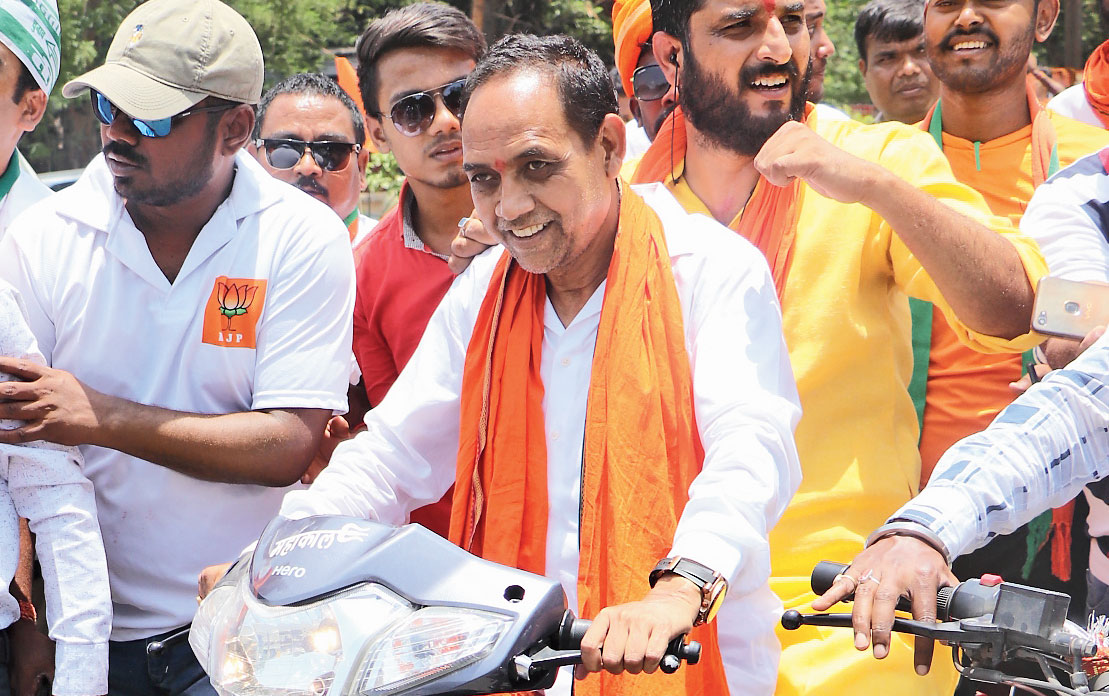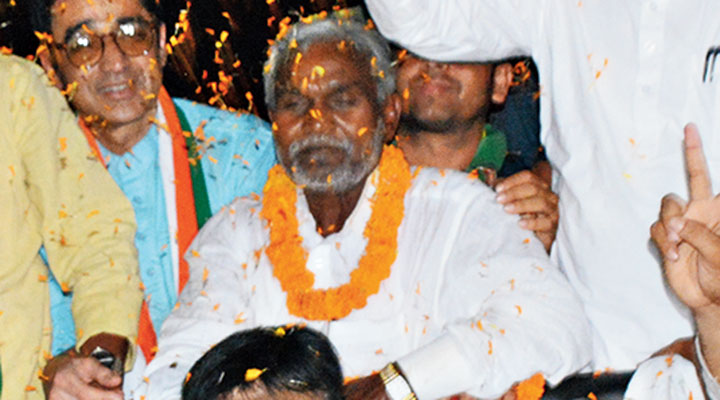The evening crowd at Jubilee Park, Jamshedpur’s quaint replica of Mysore’s Vrindavan Gardens, has waned because Jharkhand is in the midst of a gruelling heat wave.
But the regular gathering, made up of a floating population of students, bank executives and casual transitors at Geetanjali, the best place for a cup of coffee on this side of the Subarnarekha river, is as animated as always. Yet no one wants to talk politics, even though voting is a day away.
“Candidates come and go. We will see him and vote. That’s all there is to it,” says A.K. Biswas, a former Tata Steel employee, who sits at the decades-old kiosk now run by his brother-in-law at Bistupur.
After weeks of travelling through the state, it dawns that this is pretty much an election ruled by the silent voter. He talks all right, but reveals little.
The liftman at a highrise says the steel city is all for BJP candidate Bidyut Mahto. But the retired PSU employee at Jadugora in Ghatshila sub-division about 50km away, is coldly detached when he says, “Candidate ko dekhna parega. Uske baad vote karega (Will have to find out about the candidate first, and then vote).” It is a sentiment that finds resonance elsewhere on the rural and semi-urban outskirts of the steel city.
The Jamshedpur Lok Sabha constituency extends from the urban areas of Sonari, Kadma and Bistupur in the west to the Telco township in the east. Its rural areas are spread across Potka and Hata in the south to Patadma in the north and Baharagora and Ghatshila in the east.
It is a BJP stronghold with four of the six Assembly segments represented by its MLAs. Of the remaining two, one is held by the JMM and the other by the Ajsu Party, an NDA constituent.
These days in Jamshedpur, the BJP has ensured the conversation is centred around an aviation boom. More than 60,000 passengers opt for flights in a month from Ranchi now, as opposed to 1,500 daily passengers till 2014 when there were only eight daily flights, chief minister Raghubar Das said on a day a puja was held to formally announce plans to build a new airport at Dhalbhumgarh, 65km away.

BJP’s Bidyut Mahto campaigns in Jamshedpur. (Shantanu Datta)
The idea is to extend an old World War II airstrip there to facilitate landings of Boeings. No one is saying when that will happen, but civil aviation secretary R.N. Choubey has promised that ATRs will start to take off and land within 18 months.
“Once that happens, it will be very good for the Kolhan region,” avers Bikash Mukherjee, the CMD of one of the largest auto ancillaries supplying heavy vehicle parts to Tata Motors.
“As much as 30 per cent of the occupancy in flights to Delhi and Mumbai from Ranchi is from Jamshedpur,” he notes, adding that there would be enough passengers to make it viable for airlines if and when the Dhalbhumgarh airport is built.
Around Rs 100 crore will be spent to build a modern terminal building of 15,000sqft, six check-in counters, sufficient parking and enough room to park two ATRs at a time over 240 acres.
Mahto is seen as someone who pushed for the airport project and hence has been able to sidestep demonetisation and GST, the BJP’s two bugbear issues, and emerge as the “performer MP” for the industrial city of Jamshedpur. He also flaunts the Centre’s decision to revive at least three mines in the Ghatshila sub-division as a measure of its commitment to provide employment.
On the road to Dhalbhumgarh, between mineral-rich Jadogora and Mosabani, the Surda mines do display signs of revival. A “vertical shaft” that facilitates tunnelling has been erected.
But a counter-narrative is audible too. Many dispute the BJP’s claim of having started work at the Kendadi mines from December 2017, which, they insist, has been under maintenance — “de-watering” — since 2012.
“If work had truly begun, the mine would have employed close to 1,000 workers by now. Instead only 200 people are engaged in de-watering,” said a sceptical resident.

JMM’s Champai Soren campaigns in Jamshedpur. (Bhola Prasad)
Bharat Vasani, vice-president of the Singhbhum Chamber of Commerce, is happy with his MP. Ask him about the national job crisis and he rephrases it as a crisis of skilled manpower.
“Today, if I get commerce graduates with knowledge of Tally (accounting software) then I can guarantee employment of at least 1,000 people in Jamshedpur alone,” he says, implying that the Centre’s skill mission is something that should have been worked on more rigorously.
The JMM’s Champai Soren, Mahto’s prime challenger, is battling a perception that he’s out of sync with urban concerns, and hence has no following in city areas.
The gathbandhan leadership realises this and therefore held a roadshow in Jamshedpur on the penultimate day of campaigning.
Over 5,000 people thronged the road between Agrico, barely 100 metres from chief minister Das’s residence, and Telco, where the crowd swelled to 10,000.
“We wanted to prove our candidate will get votes in urban Assembly segments as well, contrary to the perception that the (Narendra) Modi magic will sweep urban votes,” explained Manoj Yadav, Soren’s media in-charge.
Yet numbers at rallies prove little. Nishikant Akhilesh, a human rights activist and lawyer, says that just because the national agrarian distress doesn’t find voice in a poor state like Jharkhand doesn’t mean the suffering of farmers can be wished away.
He has the last word. “Remember the silent voter. He is the one you don’t get to hear, I don’t get to hear. It is he who will make a big difference this time.”
Jamshedpur votes on May 12










